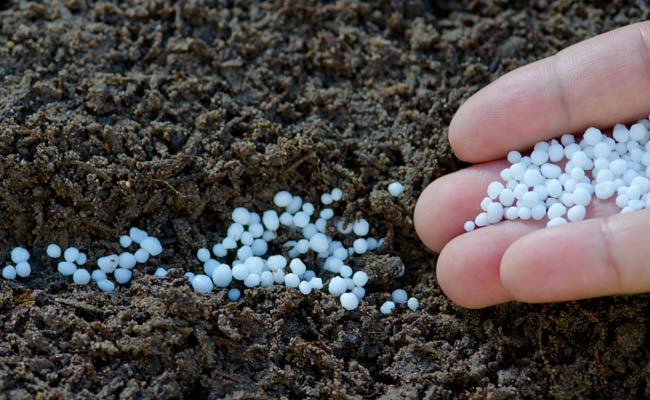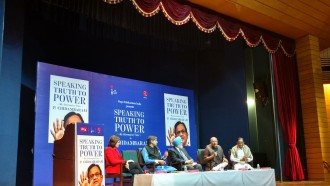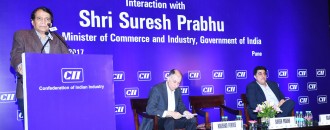
Urea subsidy to reduce marginally, as gas prices decline
The Dollar Business Bureau  The indigenous urea subsidy bill will be arrested marginally by INR 9.3 billion FY2016 pursuant to the 7.72% cut in domestic natural gas prices to USD 4.66 per mmbtu (million metric British thermal unit) from USD 5.05 per mmbtu. In one of its reports, “Fall in Gas Prices to Impact Urea Subsidy’, India Ratings & Research Company (Ind-Ra), said that the downward revision in prices is applicable for the period April 1, 2015 to September 30, 2015 and is due to the decline in gas prices at the bench mark indices of Henry Hub (HH) in the US, National Balancing Point (NBP) in the UK, Canada’s Alberta Hub as well as Russia’s energy hub, over the reference period January 2014-December 2014. The report added, Urea retail prices are controlled by the government and any change in gas prices is absorbed by the government of India (GoI) through subsidies. Ind-Ra had earlier reported (FY16 Outlook: Fertilisers) that the subsidy burden for indigenous urea had increased due to the upward revision of gas prices in November 2014. However, factoring in the November 2014 increase in gas prices, the recent downward revision will partly offset, albeit marginally, the subsidy burden by 2.4%. Nevertheless, urea subsidy requirements will continue to remain high despite the proposed reduction, as gas prices remain higher than the FY14 level of USD 4.2 per mmbtu. The upward revision in gas prices during November 2014 had significantly altered the urea production feasibility at post-cut off production levels. However, reduction in gas prices could support post cut-off production for some of the plants, the report said. The reduced gas prices could support post cut-off urea production in the short term, however, a paradigm shift in the fertilizer policy with urea price decontrol could be the only sustainable solution to support the domestic urea industry. GoI has increased the subsidy allocation for indigenous urea to INR 360 bn in FY15 from INR 265 bn in FY14 and revised it to INR 382 bn for FY15 and FY16. Increased subsidy requirements are partially due to the increase in domestic gas prices from FY14 levels as well as a marginal increase in the use of costly imported liquefied natural gas (LNG), the report concluded.
The indigenous urea subsidy bill will be arrested marginally by INR 9.3 billion FY2016 pursuant to the 7.72% cut in domestic natural gas prices to USD 4.66 per mmbtu (million metric British thermal unit) from USD 5.05 per mmbtu. In one of its reports, “Fall in Gas Prices to Impact Urea Subsidy’, India Ratings & Research Company (Ind-Ra), said that the downward revision in prices is applicable for the period April 1, 2015 to September 30, 2015 and is due to the decline in gas prices at the bench mark indices of Henry Hub (HH) in the US, National Balancing Point (NBP) in the UK, Canada’s Alberta Hub as well as Russia’s energy hub, over the reference period January 2014-December 2014. The report added, Urea retail prices are controlled by the government and any change in gas prices is absorbed by the government of India (GoI) through subsidies. Ind-Ra had earlier reported (FY16 Outlook: Fertilisers) that the subsidy burden for indigenous urea had increased due to the upward revision of gas prices in November 2014. However, factoring in the November 2014 increase in gas prices, the recent downward revision will partly offset, albeit marginally, the subsidy burden by 2.4%. Nevertheless, urea subsidy requirements will continue to remain high despite the proposed reduction, as gas prices remain higher than the FY14 level of USD 4.2 per mmbtu. The upward revision in gas prices during November 2014 had significantly altered the urea production feasibility at post-cut off production levels. However, reduction in gas prices could support post cut-off production for some of the plants, the report said. The reduced gas prices could support post cut-off urea production in the short term, however, a paradigm shift in the fertilizer policy with urea price decontrol could be the only sustainable solution to support the domestic urea industry. GoI has increased the subsidy allocation for indigenous urea to INR 360 bn in FY15 from INR 265 bn in FY14 and revised it to INR 382 bn for FY15 and FY16. Increased subsidy requirements are partially due to the increase in domestic gas prices from FY14 levels as well as a marginal increase in the use of costly imported liquefied natural gas (LNG), the report concluded.
This article was published on April 4, 2015.




.jpg)

 to success.
to success.